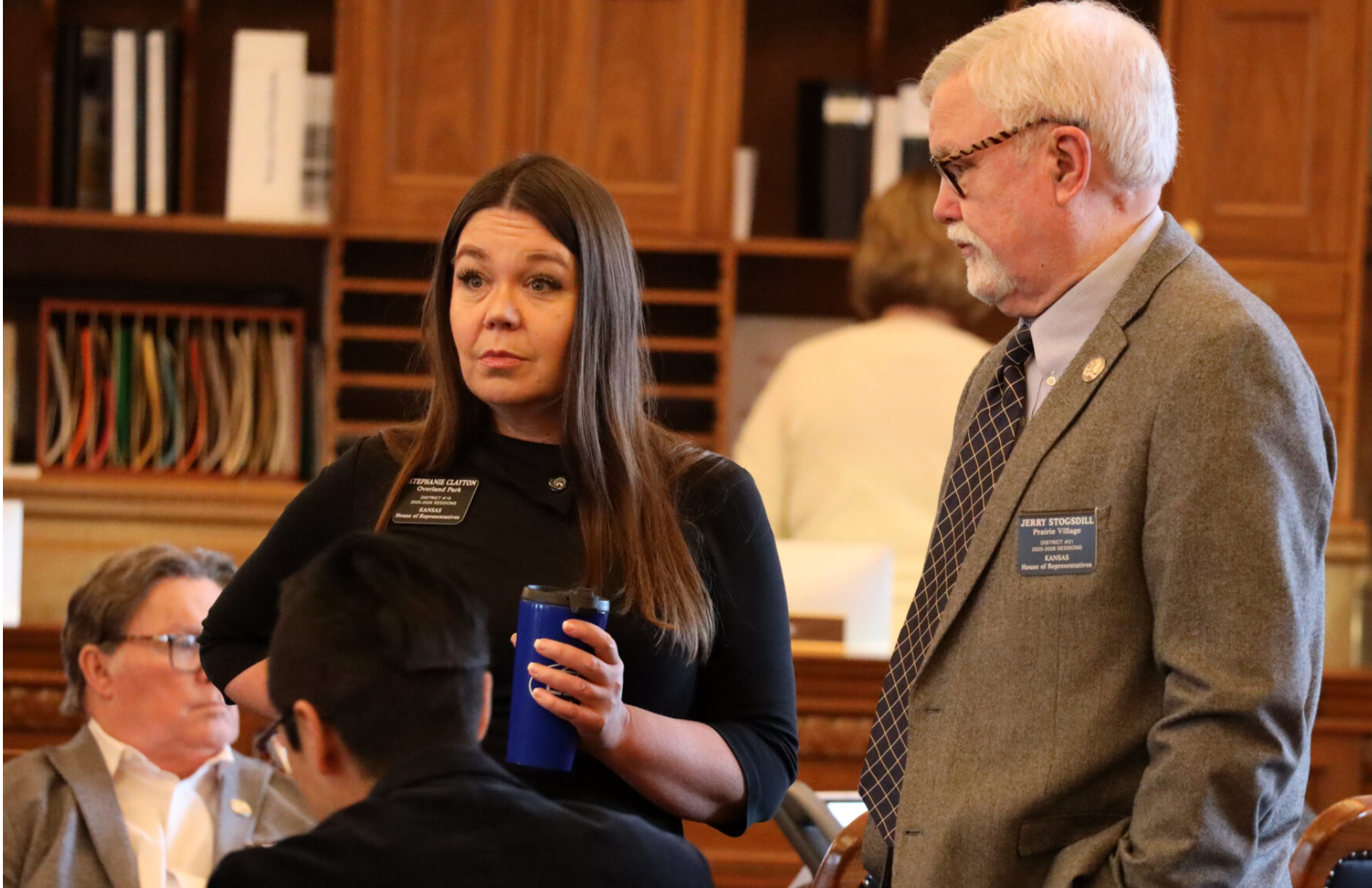
BY: ANNA KAMINSKI
Kansas Reflector
TOPEKA — Personal and corporate income taxes could see major breaks under Republican-led legislation that advanced Wednesday out of the Kansas House, but Democrats warned of repeating past mistakes.
Senate Bill 269, also known as “the income tax trigger bill,” would reduce the individual and corporate income tax rates to as low as 4%. Bank rates could drop as low as 2.6%. However, the cuts are contingent on maintaining the state’s budget stabilization fund, also known as the rainy day fund.
House lawmakers advanced the bill Wednesday mostly along party lines in an 84-38 vote. The Senate still needs to give its stamp of approval in the two remaining days of the regular session.
No Republicans defended the bill, but Democrats called it “a ratchet” and “dangerous.”
Rep. Stephanie Sawyer Clayton, an Overland Park Democrat, argued the House was the final stopgap between “what is fairly dangerous tax policy” and constituents.
The cuts can only go into effect if the state budget stabilization fund maintains a 15% balance. Right now, the fund sits at around an 18% balance, or $1.75 billion.
Anytime the amount of state income tax collected exceeds the 15% balance threshold, as determined by the state budget director, an income tax rate “buydown” would be triggered under the law, Smith said. Legislative staff couldn’t estimate the exact financial impact of such a policy change.
The changes would go into effect in 2025. The budget director would determine by Aug. 15 whether the most recent fiscal year’s total State General Fund tax receipts exceeded the previous fiscal year’s amount, adjusted for inflation.
State personal income tax rates currently range from 5.2% to 5.58%, according to the Kansas Department of Revenue. Corporations solely in Kansas are taxed at 4% of their net income plus a 3% surtax on income above $50,000. Corporations with income in Kansas and outside of it are subject to rates based on sales, property and payroll.
Under SB 269, if receipts are greater than the previous year’s inflation-adjusted amount, the director of the secretary of revenue would calculate tax rate reductions, starting with individual income taxes.
Once individual rates in both the lower and higher tax brackets reach 4%, rate reductions for corporations and financial institutions would be triggered.
Reductions would continue until the combined rate for corporations reaches 4%, the combined rate for banks reaches 2.6% and the combined rate for other financial institutions reaches 2.62%.
Rep. Tom Sawyer, a Wichita Democrat, said the cuts put the state in a difficult situation. He said the policy takes all of the state’s excess income tax revenue and transforms it into a flat income tax, leaving no additional revenue to provide property tax relief.
“I have a problem with the whole ratchet situation,” Sawyer said.
He added that special education funding hasn’t been at its statutorily mandated level since 2010, and achieving full funding will be “very difficult” under the proposed cuts.
When — not if — a recession hits, Sawyer said, the hole left behind by income tax reductions will be much more difficult to fill.
“Those of us who were here in 2013, 2014, 2015 and 2016 that had to deal with (trying) to dig ourselves out of a deep hole in the budget know what that’s like,” he said.
The cuts are reminiscent of former Gov. Sam Brownback’s tax experiment that gave hundreds of millions in tax cuts to corporations and “bankrupted” the state, Rep. Jerry Stogsdill, a Prairie Village Democrat, told Kansas Reflector. However, Brownback’s cuts were not contingent on the state’s surplus tax revenues.
Democrats also have challenged whether Republicans are going to be able to muster meaningful property tax relief legislation, a campaign-trail promise from both parties.
One of those property tax relief efforts passed the House before the income tax bill. Senate Bill 35 eliminates the statewide levy of 1 mills for the state education building fund and the .5 mills levy for the state institution building fund.
If implemented, the gap left behind in those two funds would be replaced with State General Fund dollars. In fiscal year 2027, which begins June 2026, the state education building fund would receive about $56 million and the institutional building fund would receive about $25 million from the State General Fund.
SB 296 originally had to do with pending tax appeals fees, but during negotiations, the House inserted the contents of House Bill 2318, which contained the cuts.





